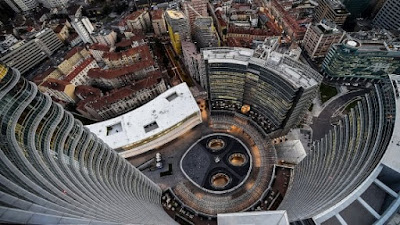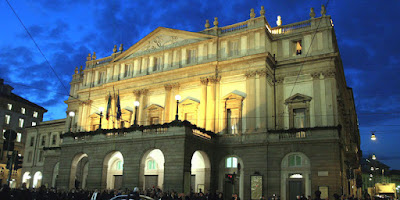When planning your first time ever trip to Italy, wether it is to one city only, or multiple, these 7 tips might make your stay in Italy more comfortable.
1. Museums are closed on Mondays. Most museums in Italy are closed on Mondays, which doesn't mean you have absolutely nothing to see or places to visit.
Monday is a perfect day to take tours, as most tourist left the city on Sunday, or are packing to leave on Monday. City tours with a local guide help you to organise your itinerary for the following days way better than just a map, or a tourist book. Some sites look close in a map, while they might be distant and complicated to get in to. Besides during this pandemia season, some sites might be close, or with limited access, and their web pages might not always be up to date.
Also some shops might be closed. Usually grocery store, small grocery businesses and markets are open on Monday mornings and other shops in the afternoon. In the most touristic areas shops usually are open 7 days a week. And huge department stores and shopping malls are open every day. The reason for this is that some shops have limited amount of personal, and can't keep the shops open 7 days a week. During the Christmas period thought, and usually the whole month of December, shops, even smaller are open every day.
2. Start from Northen Italy. I you want to visit different Italian cities, I suggest to start from northern cities, such as Turin, Milan, Verona, Bologna or Genova. As northern penisula difference from the southern one, with it's style of living architectural and cultural value, this soft landing leads traveller to an easier visit of this country. Cities, such as Turin offers beautiful occation to visit the city itself, and the Alps. From Milan you can take day trip to lakes (photos are about Lake Orta, Lake Maggiore and at Stresa ) Bergamo Alto, and to Pavia, just to mention few. From Verona, you can visit Padova, Mantova and Venice. From Genova with a local train Camogli, Portofino, Santa Magherita Ligure and Cinque Terre National Park. And from Bologna the Adriitic Sea, Ferrara and Firenze, Milano and so on.
Most traveller have usually just a lay over to Northern cities, without knowing the potential of these beautiful itineraries.
3. Eating and Drinking. Typical Italian breakfast is espresso coffee. Most people do not eat any breakfast until a bit later, and even then it is Cappuccino and Brioche. If you are, like me, a salty breakfast type, it is useful to check out and make sure your hotel offers a continental breakfast. It is lighter than a full English breakfast and allows you to have some space for Italian delicacy.
Eating time varies. It is a common use that restaurants close after the major lunch time, to allow their personal some rest before the evening rush. Here follows the same rule as with smaller shops. Restaurant are often little family businesses, and have very little external personal. Luckily in the last ten past years, Italians have opened to the idea that not everyone need some food at the same time, and in the most popular touristic areas, restaurants are open from noon to midnight.
If you prefer to experiment typical local restaurants, then keep in mind that they might have strickt opening hours.
Vegans have no problem eating in Italy, and often those suffering from gluten/milk intolerance can use the regular menu, as polenta is made by corn, risotto has no gluten and steak are usually served with potatoes. Plenty of vegetable grilled, steamed and raw are also in most restaurants menu. You can order pizza without cheese, just like your pasta or risotto. To those suffering of Celiac need to find a special restaurant.
Tipping is not necessary, but is accepted. There is not a certain % of tip locals and travellers are expected to leave. I suggest to make it round. Lets imagine my family meal cost €92, a tip of €8 would round it to 100. Not a lot, but leaves a great impact and makes happy waiters and chefs. I usually tip taxi drivers too. What comes to billing in the restaurant, we have this common use, witch is "The Roman Way". We just simply share the bill. €100 devided to 5 plus €2 for a tip each (everyone has coins in their wallet). But what if someone takes profit and eats a steak, drinks wine and has a huge dessert, while the rest eats only some pizza. We can't really ask that person to put more, but in most cases is the person self who adds more according her his eating habits. In some cases we also pay the bill on turn. Today is my turn, next time is someone else turn. This happens when a group of people gather often and socialise in a restaurant. It could thus happen to you that you can't pay the bill at all, if you are visiting Italian friends. Therefore a nice bottle of good quality wine as a gift to those who participate to pay on your behalf is well accepted. Or when they visit you, they might wait the same attitude.
4. Public Transport works perfectly connecting cities. Wether it is a bus, a train or a plane, there is no worry to get there, and most likely on time. But reserve always that extra, in case of...
A totally different story might turn out if you want to visit destinations a bit further. there might be just one bus getting there and another to get back. Most likely during the school hours. In cases of remote destinations, my suggestion is to rent a car. It gives you the freedom to choose your own itinerary. If you do not feel comfortable driving, local guides may help you out. Such as driving you and your travel group to visit wineries, cheese farms, and archeological sites, often out of the beaten track.
5. Travel Budget My usual travel budget is €100 a day, regardless what I purchased in my travel package. It doesn't include hotel reservation. A local private guide charge proximately €180 for 2/3hours for a certain amount of people. More you are, less you pay p.p. While organised day trips cost €100 p.p. I mix these two. In a city, I prefer a local guide only to my needs, and to be able to have the guide's full attention. And I also participate on group trips. Most museums cost about €12/ €15 and for a light lunch I reserve €10/€20, while for a diner my budget is between €25 and €40. At this point, you may ask, how I manage to visit places with €100 a day. Well, its a bit of a question of organising. As I am planning to go to Naples this year, I calculated following:
- Day of arrival, taxi to my hotel €12 p.p. , a sandwich lunch with €10 max and a local guide €50 p.p. + tips ending with a diner €25 max, including the tip. A bit over €100 ( I have to save some other day!)
- The very next day I have reserved for an organised group tour including lunch €100 p.p. and later in the evening nice diner €35 ( yes, I exceed my budget)
- Third day some museums, and chilling around, saving those €35 from the day earlier.
- The fourth day I am going to have a trip on my own, using local transport, to another city and visit a local museum. A light lunch, seeking some local souvenirs and diner once back.
-The last day, perhaps another site or group visit to a site, I might have missed and a taxi to the airport.
It is always a great pleasure to get back home and learning that my budget worked out, or exceed just with tiny little bit.
If you wish to buy souvenirs, then add €25 a day to your budget.
I must add at this point, that I am an over 50 traveller, and I have totally different needs of those of 20 years old, and those who manage budget travelling with few € a day.
6. Getting in touch with local people. Italians are really kind and generous. And it is easy to get along with Italians, even if the common language isnt the same. There are some topics that might help out, such as soccer, and food. If you have been travelling quite a while and you are in the last few destinations, showing photos of the places you have visited is another topic, that helps connecting with locals.
7. The best period to visit Italy is at any time. Just remember that during the hot summer season, between June and August, the midday hours might turn out difficult to digest. The third week of October is usually the last summer week before autumn. The fall is mite, and specially in southern Italy dining out can be done the year around. January and February can be pretty cold and rainy in the northern Italy, all thought like this year, it has been extremely dry and warm. January and February gives great opportunity for shopping with numerous discounts.
March opens the spring. Italian cities are filled with new life, with blooming trees.
There is thus no special season or month, when your trip to Italy should take place. Come when you feel like, and you shall be surprised.
Welcome to Italy.
Photos are taken by author. Please request a permission to use them.















































